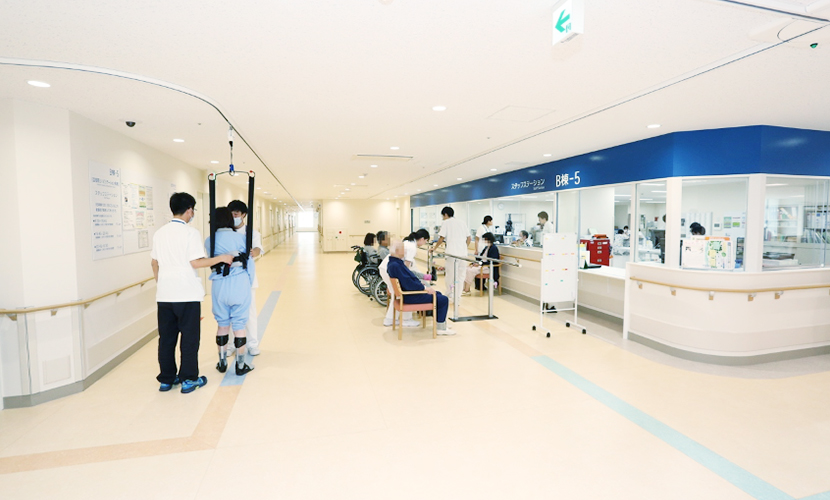In 2000, when long-term care insurance was started, the intensive inpatient rehabilitation ward named Kaifukuki Rehabilitation Ward (KRW) was established. The role of KRW is to provide intensive inpatient rehabilitation so that the patient has improved sufficiently before long-term care is considered. Simultaneously, we started to pursue the most effective inpatient rehabilitation.
Before 2000, rehabilitation was provided by therapists on weekdays. To intervene this practice, Fujita Health University Nanakuri Memorial Hospital (Fujita Health University Nanakuri Sanatorium) started a new type of intensive inpatient rehabilitation program, Full-time Integrated Treatment (FIT) Program in KRW, in which not only therapists, but also nurses, physiatrists, and other professionals communicate with each other to keep the patients active all day, throughout the year. The 6-meter-wide corridor, which is the symbol of the FIT program, is a training and communication space that is extremely useful for mutual understanding between therapists and nurses.
Triangle-pairs, a system that allows experienced therapists to train their patients seven days a week, has also been developed, with three therapists working in pairs to be the primary and secondary person-in-charge for patients. In the wards, patients are encouraged to perform daily living activities that can be done in the training gym as much as possible. For this smooth transition of the patients’ ability from the gym and to the wards, nurses and care workers play an active role.
A stroke database of more than 6,500 patients admitted to the rehabilitation wards has been developed. From this database, many research activities such as elucidation of the structure of disability in stroke patients and prediction of the functional outcomes have been initiated. The FIT program has evolved from two-hour training to three-hour training per day, and the difference in the amount of training time has proven to improve rehabilitation outcomes. Furthermore, to make it easier for anyone to predict outcomes, we developed the Comprehensive and Accessible Rehabilitation Database (CARD), which uses the database to find similar patients and immediately visualize their outcomes.
In 2018, we also opened a 60-bed intensive inpatient rehabilitation ward (KRW) at Fujita Health University Hospital, based on the experience and knowledge accumulated at Fujita Health University Nanakuri Memorial Hospital. We are building a futuristic rehabilitation environment with technology including rehabilitation robots. We also accept patients from outside the university hospital. For patients who transferred from our acute care wards to KRW, we have been accumulating the rehabilitation data from the onset (injury) onwards. We are conducting many clinical studies based on these data.
The 6-meter-wide corridor, a place for training and communication, is a symbolic space of Fujita Health University Nanakuri Memorial Hospital.

Proactive transdisciplinary communication: morning conference
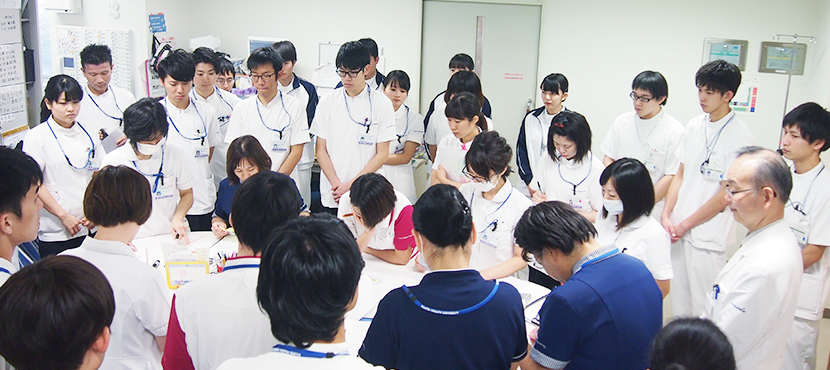
The introduction of FIT program has clearly improved the activities of daily living.
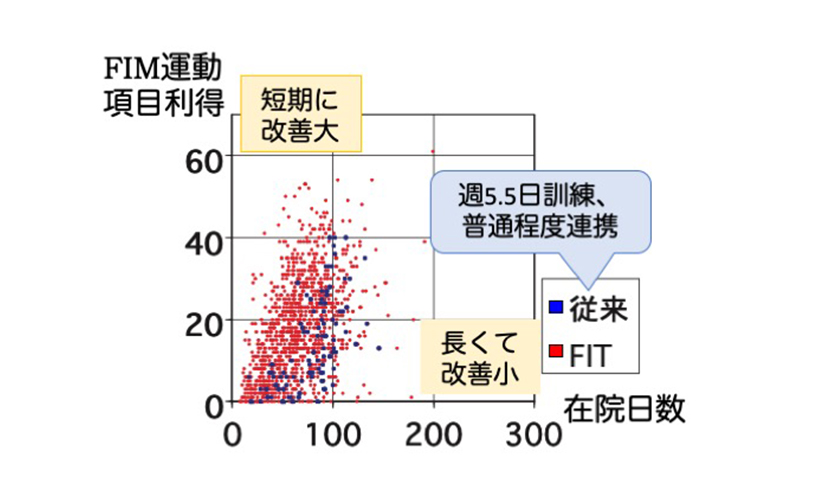
CARD developed from a stroke database of more than 6,500 patients
Using this database, we can predict functional outcomes more accurately, which leads to appropriate treatment. In addition, several clinical studies are ongoing.
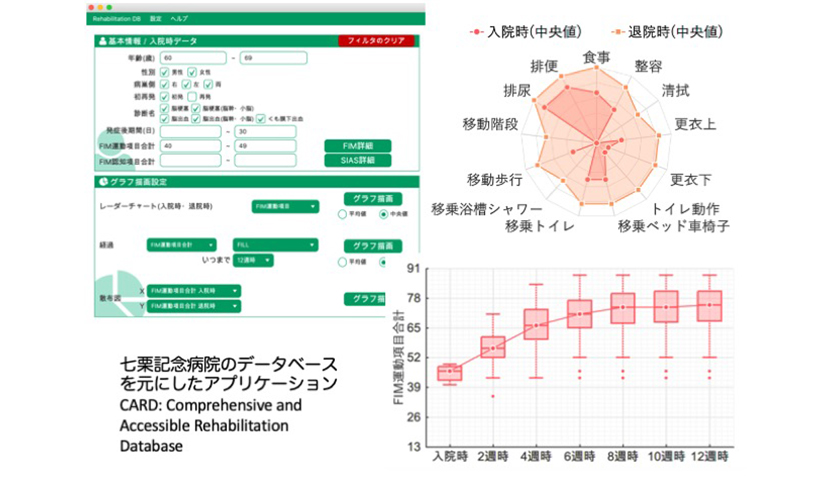
Using a model of non-stop rehabilitation from the acute stage to the convalescent stage using the latest technology (Fujita Health University Hospital)
We have installed several robots, including a rehabilitation robot developed by the Toyota Motor Corporation.
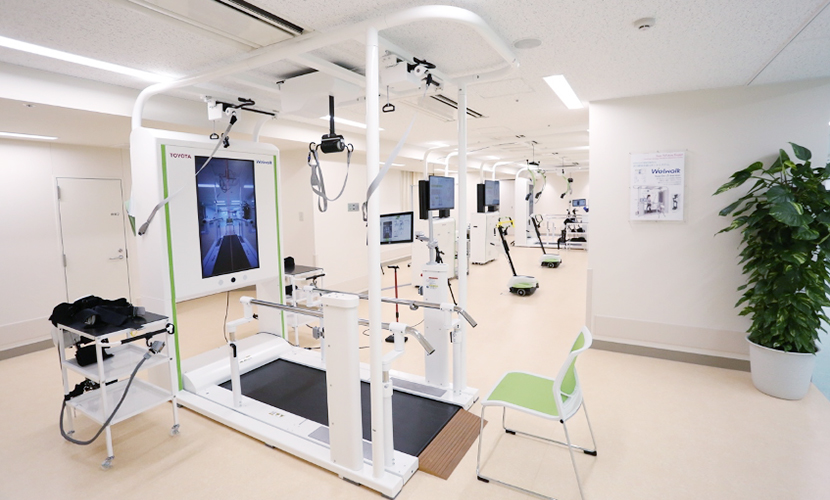
A wide corridor equipped with a long suspension system provides an effective space for training.
